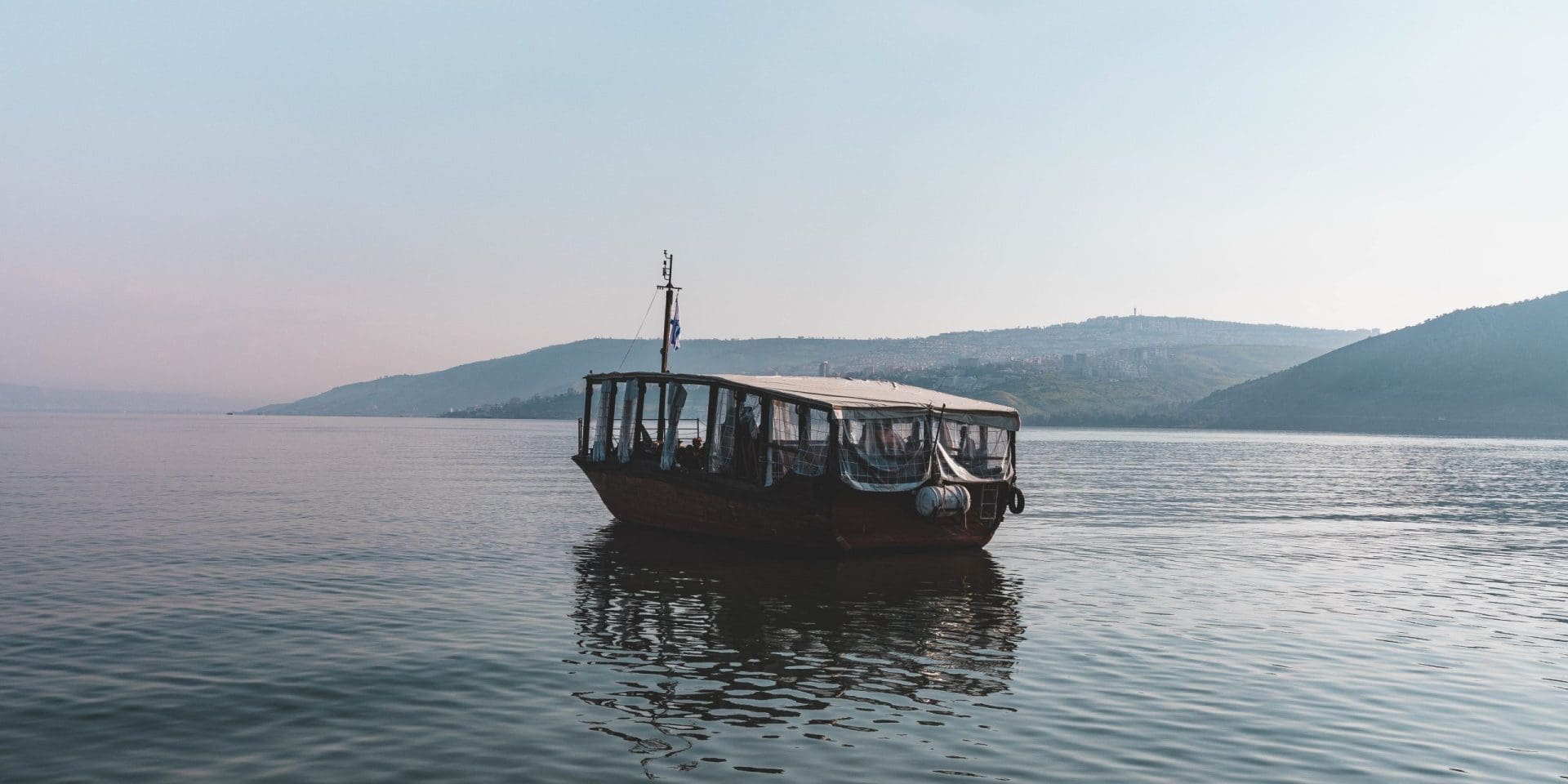A central location in the New Testament gospels is the Sea of Galilee. This large, freshwater lake is also known as the Sea of Tiberius, the Lake of Gennesaret, or Lake Kinneret. As Jesus’ ministry was begun in the Galilee region and because several of his disciples were fishermen of Galilee, Jesus famously interacted with the lake. Here he helped the disciples catch miraculous amounts of fish, even a specific fish, he calmed a storm, walked on water, taught from boats, and travelled on the lake to new regions.
The Bible records some interesting details about fishing nets, and fishermen, even using these as examples of the kingdom of God. In the ancient world three types of fishing nets were used on the Sea of Galilee. The oldest, and perhaps the most important[1] net was the dragnet. (There are images of dragnets being used in Egyptian Tombs) This net created a long wall parallel to the shore that would be pulled into the shore by ropes attached to its sides. Dragnets were up to 1000 feet long, 25 feet tall at their middle point. Lead sinkers would be attached to the bottom rope of the net and cork floats to the top rope creating a wall to capture fish.
These large nets would be arranged on a boat on a special platform, and then spread into the sea as the boat sailed about 100 yards from shore. A team of up to 16 men, 8 on each side, would man the ropes and pull them in while they walked father inland and toward each other. Dragging in the net would capture any fish between the net and the shore, potentially bringing in hundreds of pounds of fish.
The fish would be sorted on shore because only three kinds of fish in the Galilee were considered fit to eat and commercially important. The net would be reordered, and the fishing team would begin again in a different spot on the shore. This could be repeated several times a day.
“Once again, the kingdom of heaven is like a net that was let down into the lake and caught all kinds of fish.”
Matthew 13:47
Jesus seems to have had the dragnet in mind when he said, “Once again, the kingdom of heaven is like a net that was let down into the lake and caught all kinds of fish. When it was full, the fishermen pulled it up on the shore. Then they sat down and collected the good fish in baskets, but threw the bad away. This is how it will be at the end of the age. The angels will come and separate the wicked from the righteous and throw them into the blazing furnace, where there will be weeping and gnashing of teeth.” (Matthew 13:47-50)
The cast net was able to be used by a single fisherman either standing in shallow water or from a boat. (Whole cast nets have been found in Egyptian tombs.) It was circular and about 25 feet in diameter. The fisherman would throw it on the water and the weights attached to its perimeter would sink it quickly to the bottom of the lake, trapping any fish underneath it. The fishermen would dive down and carefully gather the edges of the net and drag it to shore or swim it back to his boat.
A trammel net is composed of three layers, the outer have a larger weaved net while the inner is a tightly weaved net. Several trammel nets are joined together to create up to a 500-foot-long trap. The net is spread in the water in a curve or various shapes designed by the fishermen. Then the boat sails between the shore and the net and the fishermen splash, stomp, hit the water and the boat with their oars to scare the fish away and into their trammel net. The fish become tangled in the net, they are taken out one by one as the net is pulled up. Or, if there is a really great catch the net may be taken to the shore to be detangled and reset for another go. Fishing like this was generally done at night because nets were made of linen which would be too visible to the fish in the daylight.

Corie Bobechko is a daily co-host, speaker, and writer of Bible Discovery. She also hosts a YouTube channel that shows how history and archaeology prove the Bible. Her heart for seekers and skeptics has led her to seek truth and share it with others. Corie also has a Bachelor of Theology from Canada Christian College.
[1] Nun, 1993
• Nun, M. (1993). Cast Your Net Upon the Waters: Fish and Fishermen in Jesus’ Time. Biblical Archaeology Review, 19(6), 46–49, 51–56, 70.
https://www.baslibrary.org/biblical-archaeology-review/19/6/11
• Murphy-O’Connor, J. (1999). Fishers of Fish, Fishers of Men. Bible Review, 15(3), 22–27, 48.
https://www.baslibrary.org/bible-review/15/3/13






